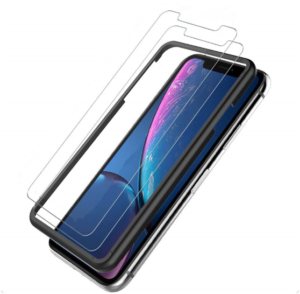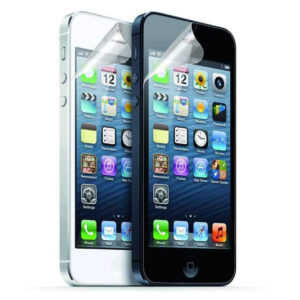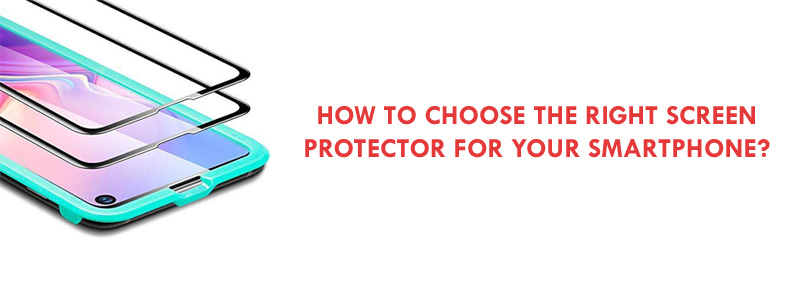For most of us, our smartphone is the most valuable belonging we have. Not just because of the price, but because of the convenience and functionality that they offer. So, it is only natural that we want to make our best efforts to protect our cell phones. One of the most effective ways of doing this is by purchasing a screen protector for your smartphone.
Screen protectors are not unbreakable and neither they will protect your phone from everything. But, they do provide an additional layer of glass that protects your smartphone’s display. Additionally, repairing your phone’s screen will cost you much more than purchasing a screen protector. Therefore, it is always good to have a screen protector on your smartphone to protect it against scratches and shocks.
The issue is: which screen protector should you choose? With so many phone screen protectors out there to choose from, it can be difficult to pick the right one. This choice can be made simpler though if you break down the entire process into small steps that will help you choose a protector worth your money.
This blog post aims to help readers understand the difference between a good-quality phone screen protector and a poor quality one so that they can make the right choice next time they are out to buy a protector for their smartphone.
Check here: iPad and Tablet Screen Protectors | Laptops Screen Protectors
Tempered Glass vs. Plastic Film
Tempered glass protectors are screen protectors made of glass. Tempering is a heating process of glass that forms a glass sheet, and after cooling it rapidly we end up having a piece of glass that is more durable than the glass sheet itself. The tempered glass protector is hard and has a fixed shape that is also the tell-tale sign of such a protector. It is stiff that helps you to align it carefully while applying it on your smartphone.

Even though protectors have become quite popular recently, plastic film protectors have been around for a very long time You are likely to have seen or used a plastic film protector on one of your cell phones in the past. They consist of a sheet of plastic that needs to be applied carefully on the phone screen as they roll up very easily.
Plastic protectors are relatively cheaper as you can get a pack of five within a dollar these days. However, they are not very helpful in case of falls or drops as they are really flimsy. They can work against scratches, but mobile screen tempered glass protectors are much more durable and offer a high level of protection.

Nowadays, people prefer choosing tempered glass protectors over plastic films because they are more durable and offer a better ‘glass-like’ feel (as opposed to the cheap feel of plastic).
Watch Here: How to install tempered glass mobile screen protector?
What is it made up of ?
Most phone screen protectors look alike but their composition is actually quite different. A full glass screen protector may look the same as a hybrid protector but the devil is in the details.
A hybrid protector is covered with a fiber-glass component that is pasted on the protector. It is possible that the screen portion might pare once the glue loses its strength. In comparison, tempered glass protectors would not peel off.
Apart from the type of composition, the quality of the glass itself is an important factor to consider too. Even if the glass is thick but the composition is of poor quality, the protection offered by the protector will be insubstantial.
How smooth is the coating?
Phone screen protectors are coated with something known as anoleophobic coating that repels oil. This coating is what ensures that the glass does not get smudged in fingerprints (since our skin produces oil and the coating prevents oil from staying on the surface of the protector).
Oleophobic coatings are used widely nowadays for making touch screens that are smudge-resistant. But it is also used on most glass screen protectors these days.
The coating used on the screen protector directly influences the smoothness of the screen itself. If the manufacturer tends to spend a little less on the coating, the protector will likely end up having a low-quality coating. Thus, the protector will have a grainy surface that will leave the fingerprints, grease marks, and water on the surface of the glass.
A smooth protector might not be coated with an oleophobic coating so it is recommended to check the coating in the specifications as well before purchasing a new phone screen protector.
It should not be too skinny nor too thick
In the case of phone screen protectors, with more thickness comes more durability but it also makes the phone look and feel bulkier. On the contrary, a thin protector will give you a nice feeling and elegant look but with less protection.
Therefore, you will need to find an optimal balance between something that gives you a nice feeling and something that offers a high level of protection. People who often drop their phones should use thicker phone screen protectors whereas people who are more concerned about the look and feel of their smartphone may choose a thin protector. In most cases, a 0.3 mm protector is a good balance between the desired feeling and durability.
How does it look on your smartphone?
Even though the purpose of screen protectors is to keep your phone’s expensive screen safe and protected, you may not like something that completely ruins the beauty of your smartphone. Therefore, the overall look is also important and you should choose a protector that goes well with the design of your phone.
For curved smartphones, you should consider a 3D full coverage mobile screen tempered glass protector. Not only do these protectors look better on your smartphone, but they offer far better protection too because they cover all edges. Similarly, for a smartphone with a notch or punch-hole, make sure that the protector has a similar notch/punch-hole design so that it perfectly complements your phone’s design.
How clear is the glass?
Screen protectors that have an opalescent effect can be a sign of worry. The simplest way to differentiate between an opalescent screen protector and a clear one is to shine it through light – if you see changing colors then you probably should not buy that phone screen protector. The rule of thumb is to look for a protector that is clear and transparent. You do not want 95% transparency because even that 5% can be a lot of compromise. Look for protectors that are at least 99% transparent and allow you to see your smartphone clearly without any refraction of light.
Hardness level: What to consider
Generally, tempered glass protectors are made of glass of hardness between 6H-7H; where H of a pencil is the hardness base. On some premium protectors, the hardness level can be as high as 9H. The harder the protector, the more the protection. However, you should keep in mind that no matter what the hardness rating, a tempered glass protector cannot handle gravel or fine dust particles and is likely to get scratched by them.
Water-resistance is a cherry on top
Everything depreciates over time and so is the case with the phone screen protectors. The anti-fingerprint oleophobic coating on your protector might go away after prolonged use as it will wear down over time. Not just this, but the glue behind it will also lose its strength over time. This is particularly true for protectors that are not water-resistant since they can lose their ‘stickiness’ and coating by regular exposure to water (from your hands, moisture in the air, etc.). Therefore, it is recommended that you look for a phone screen protector that has glue and coating which is water-resistant, at least to some extent, for durability.
Conclusion
No one wants to see a cracked smartphone screen. The entire experience can be quite frustrating – having to go without a phone for days and the high costs of repair. To avoid this episode of trauma, you can purchase a glass screen protector for your smartphone to protect the display against falls, accidents, and scratches. In this blog post, we have discussed how you can differentiate between good protectors and bad protectors.
By following the tips and guidelines mentioned in this guide, you can choose the right screen protector for your smartphone. To test your knowledge and find an excellent variety of screen protectors for your smartphone, visit Esource Parts.
Read More: Top 7 Gadgets for Your Smartphone
